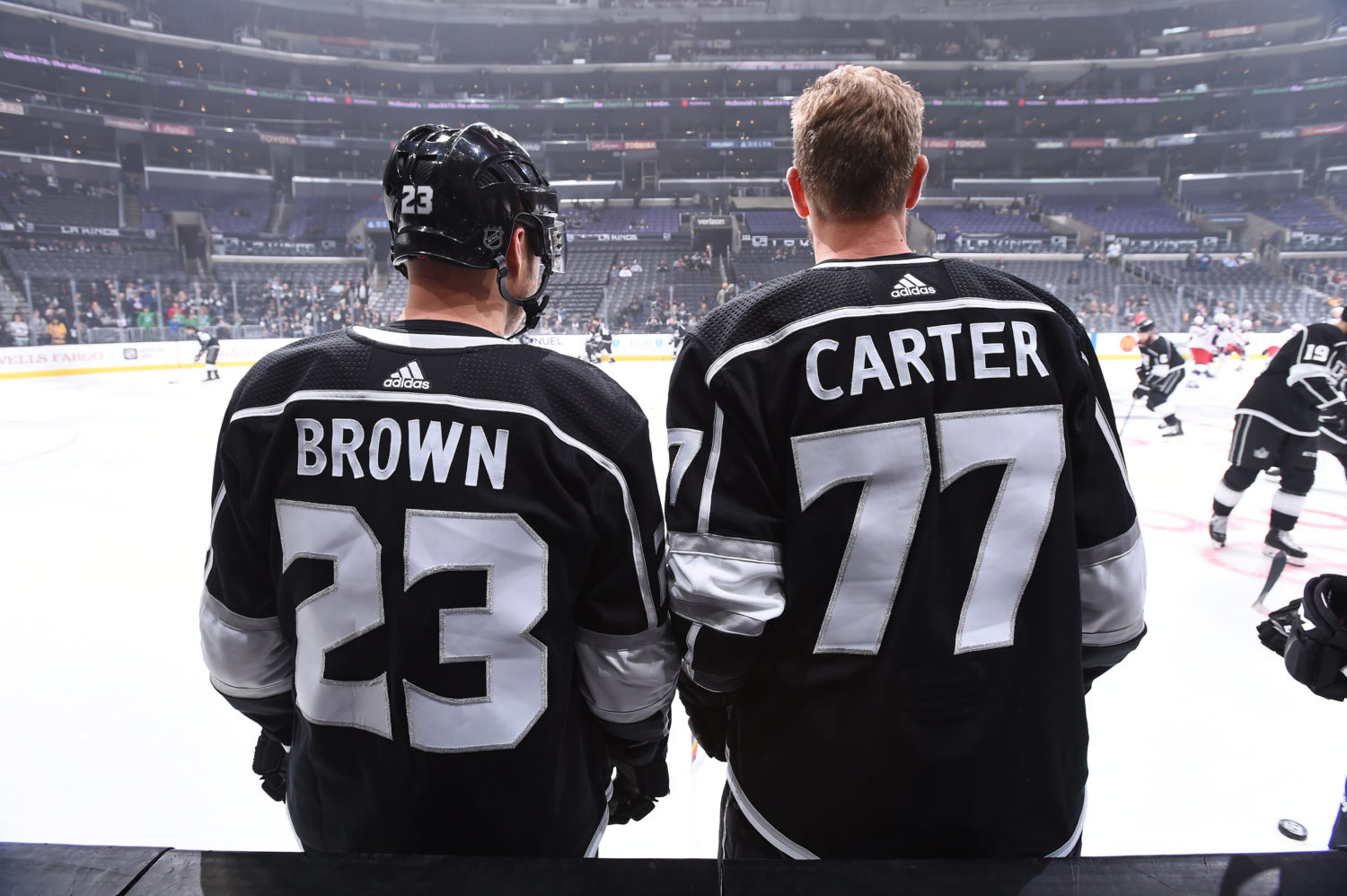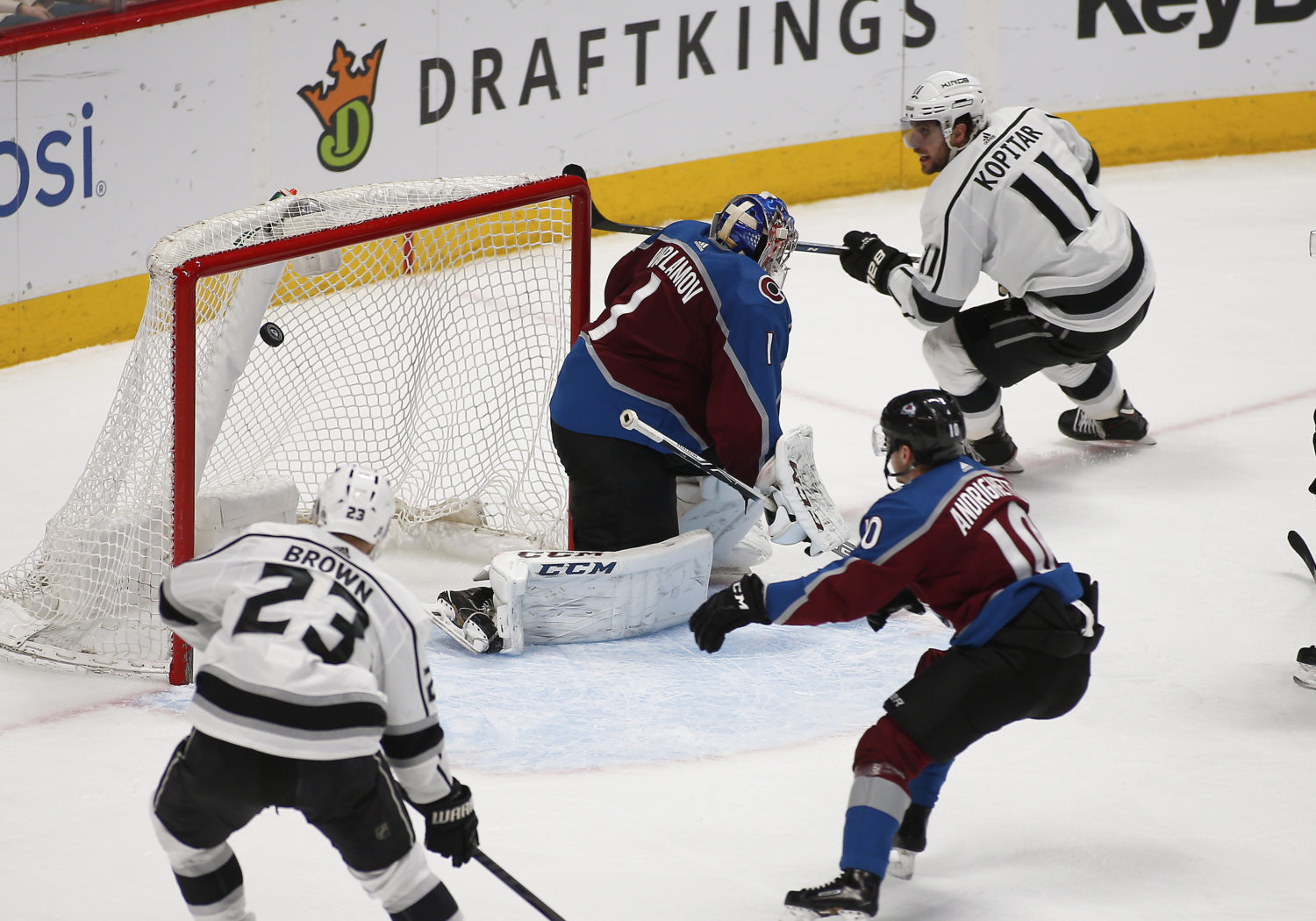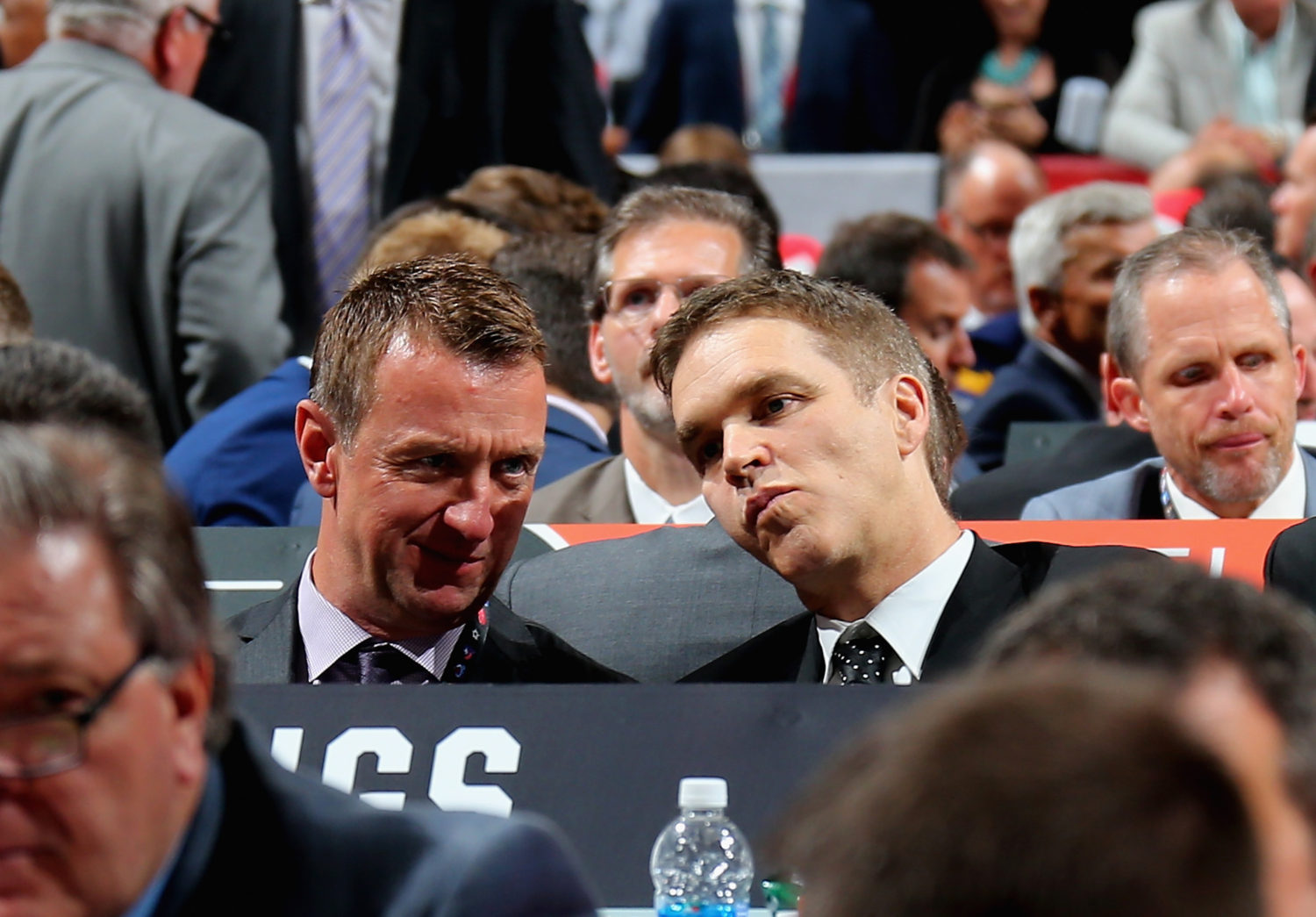On one hand, there’s the 82-game sample size in which central members of the core experienced career years as the team improved offensively, retained its defensive identity, won the Jennings Trophy, improved its power play and finished with the league’s top penalty kill.
On the other hand, you know, the whole playoff thing. While the consensus among many who aren’t affiliated with the Kings is that the club deserved better than a four-game sweep at the hands of the Vegas Golden Knights, no one’s really kidding themselves into thinking that Los Angeles was the better team in a series in which they led for nearly 33 minutes, were tied for 123 and trailed for 119. Say what you will about the four one-goal games, or the one game in which the Kings were down their top three defensemen, or that L.A. was the better team in games three and four, they only scored three goals in the four-game set, and players whose production had gone cold late in the season didn’t exactly emerge from hibernation.
“We all feel it’s unacceptable,” Team President Luc Robitaille said. “We built this franchise … to win, and when we say, ‘to win,’ our goal is to win the Stanley Cup. That being said, it’s a lot harder to make the playoffs today than it was when I started, when it was 21 teams and five teams didn’t make it. So, when you get in the tournament, you have a shot at winning, but if you get out in four games and you scored three goals, you go right back to the drawing board the very next day and say, ‘OK, what went wrong?,’ because that can’t happen again.”
And so as Robitaille and General Manager Rob Blake and Head Coach John Stevens met with the media last Friday at the team’s headquarters in El Segundo, it was a media session that interrupted the immediate post-season autopsy and introspection.
“We took a break just now to come talk to you,” Stevens said. Those in attendance enjoyed that response, but Stevens wasn’t joking. At the time of the press conference, he was in the middle of tracking what the scoring chance analytics had said that led to the team’s league-worst goal differential in the first period and league-best differential in the third.
“We’ve already seen a couple trends that have presented themselves where there’s a big discrepancy in areas of the ice where there’s either production or teams scoring … and where is it coming in the hockey game, and I think we can learn from that,” Stevens said. “We can learn from that as a group as of preparation, we can learn from that how we need to play in different situations, and we can learn from that in OK, where are these goals being created from? Are these goals that are putting us down early in hockey games, where are they coming from?”
While that puzzle is something that will continue to draw focus throughout the off-season, one thing is very clearly established, as relayed through last week’s availability: this team remains committed to winning in the short term and will continue to concertedly invest in its pursuit of a third Stanley Cup with the current core.
“That’s the way we look at it,” Robitaille said. “We want to give ourselves a shot every year, and that’s the reason we’re going to spend to the cap, and that’s the reason where we’re going to be as an organization.”
So don’t mention the word “rebuild.” This is a team that still believes the window to win is currently open – an inner core of Anze Kopitar, Drew Doughty and Jonathan Quick, and that outward core of Jeff Carter, Dustin Brown and several others on the periphery provides strong backing for that claim – despite the challenges of the salary cap, a natural aging curve and the shift of the game towards pacing, speed and skill and a partial evolution away from the style of hockey that helped build an empire at the corner on Figueroa Avenue. “I don’t think it’s about getting back, I think we have a really good hockey team,” Quick said last week when asked how close the team is to “being back” in Stanley Cup contention.
In order to back up the team’s intent with actions, there will be a focus on trying to get more from the secondary core when the team reconvenes for training camp in September. Tanner Pearson’s drop from 24 goals to 15, and Tyler Toffoli’s 15-game regular season and postseason stretch without an even strength goal are the most distinct examples of a secondary core that sputtered during critical times and will be discussed in articles later this week. There’s also the intriguing potential of 2017 first round draft pick Gabriel Vilardi, who has 33 goals and 80 points through 47 regular season and playoff games in the OHL, pushing for a spot on the team as a 19-year-old next season and providing the next link in a younger wave of players with the potential to complement the team’s productive core. It’s way too early to start predicting the output of a player who, should he not make the Kings, would have to be returned to the OHL, but the emergence of productive players on entry-level contracts is crucial for cap-spending teams with highly paid star players and deep postseason aspirations, and thus, Vilardi’s early seasons with the club will hold an interesting sway in the team’s short-term ceiling.
Between Vilardi and the recently-turned – gasp! – 26-year-olds in Pearson and Toffoli, there exists a younger secondary group that will be called upon to demonstrate an upward trajectory that can help the team. Adrian Kempe and Alex Iafallo, who etched out strong rookie seasons, are among that next group.
“I think we’ve had some players here that here that have been here for a long time that have won championships. I still think those players are capable. We have some younger guys that have gotten some tastes this year,” Dustin Brown said. “Like any other team, they need to make the next step and the older players need to help them make that next step and that’s what it comes down to. If you want to be a contender, you have to have new players come in and have impacts. Again, that’s for the young players to be excited about having that opportunity and older players to help those guys along.”
Blake has placed an emphasis on rebuilding the team’s prospect core, which, prior to his ascension to general manager, had been depleted after Dean Lombardi had exchanged a number of assets for rental-type players in an effort to continue to provide the elite core an ability to play for the Stanley Cup. Between 2011 and 2016, the Kings made two first round draft picks in Tanner Pearson and Adrian Kempe, and neither was selected higher than 29th. Of their six second round picks over that span, Chris Gibson went unsigned, Roland McKeown was traded to Carolina in the Andrej Sekera trade, Valentin Zykov to Carolina for Kris Versteeg, and Erik Cernak was traded to Tampa Bay in the Ben Bishop trade. Only Alex Lintuniemi (2014), who has made deliberate but steady progress in Ontario, and Kale Clague (2016), who will make his professional debut as a 20-year-old next season, remain property of the club.
“I think the focus for us in the draft is very similar to last year,” Blake said. “We’re going to hold these picks.”
The overall pipeline will continue to be rebuilt this off-season after the goaltending chain was addressed over the last two years with the savvy trade for Jack Campbell, the signing of the highly touted Cal Petersen to a free agent contract, and the re-stocking of lower chains with the drafting of 18-year-old Matthew Villalta and the signing of 20-year-old Cole Kehler from major junior hockey. The team also bolstered its pipeline by signing Dan Brickley and Sheldon Rempal – two top NCAA free agents this past year – and major junior defenseman Austin Strand to free agent contracts.
But those chips will pay their strongest dividends down the line, which, the team hopes, will add to the sustainability of the success it looks to re-establish this coming year. Because as much as the regular season provided an intriguing set of data, a first round sweep with a 30-year-old Kopitar, a 28-year-old Doughty, a 31-year-old Quick and a 33-year-old Brown posting excellent seasons represents a missed opportunity.
“Our job here is to win, and when you go out in the first round, there’s a disappointing feeling to that,” Blake said. “When you encompass a lot of things that look up to it, we made some progress. Like I said, our stress for offense and how our team will produce that, and our players and our personnel will continue to grow.”
Rob Blake, on how far the team is from its caliber of hockey in 2012 and 2014:
I mean, it’s interesting. Those were very good teams. The makeups were a little bit different. I think if you look at core-type players, and I’ll go back to our goaltender, our top defenseman in Drew Doughty and our top forward in Anze Kopitar, they performed exactly how we wanted them to this year. They’re terrific players, and it’s our job to build around that and supply the other aspects to keep that team to that level. Those two teams won Stanley Cups. We didn’t this year, so we have work to do.
John Stevens, on his immediate off-season focus:
I think when you become a coach, and I’ve played the game for a long time, the thing I love about coaching is the study of the game. And the things I love about coaching is trying to help players become better players. If we’re not trying to get better, we’re going to be left behind, and we’ve got to learn from it. You go into the year this year, nobody knew what we were going to get within the division with the new team coming in. You had Edmonton and Calgary looking like they were going to take a big step. You just never know. Don’t just look at the teams that beat you. You have teams behind you trying to get in front of you. We’ve got to get better as a group, and we need our players to get better individually. We had lots of guys come back who had big bounce-back years, well, that needs to be the standard. That can’t be the exception to the rule, and I thought the preparation from this group last summer was tremendous, but our staff’s got a lot of work to do trying to help these players, and that’s all of our staff. That’s our off-ice people, that’s our medical staff, and that’s our coaches. We’ve got a lot of work to do to help these guys become better. We’ve got a lot of work to do to make sure that we’re a better hockey team.
-Lead photo via Juan Ocampo/NHLI





Rules for Blog Commenting
Repeated violations of the blog rules will result in site bans, commensurate with the nature and number of offenses.
Please flag any comments that violate the site rules for moderation. For immediate problems regarding problematic posts, please email zdooley@lakings.com.